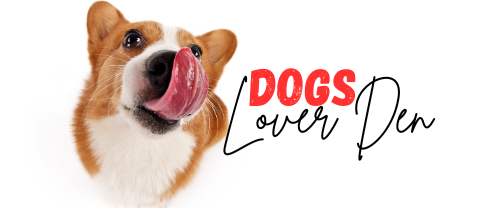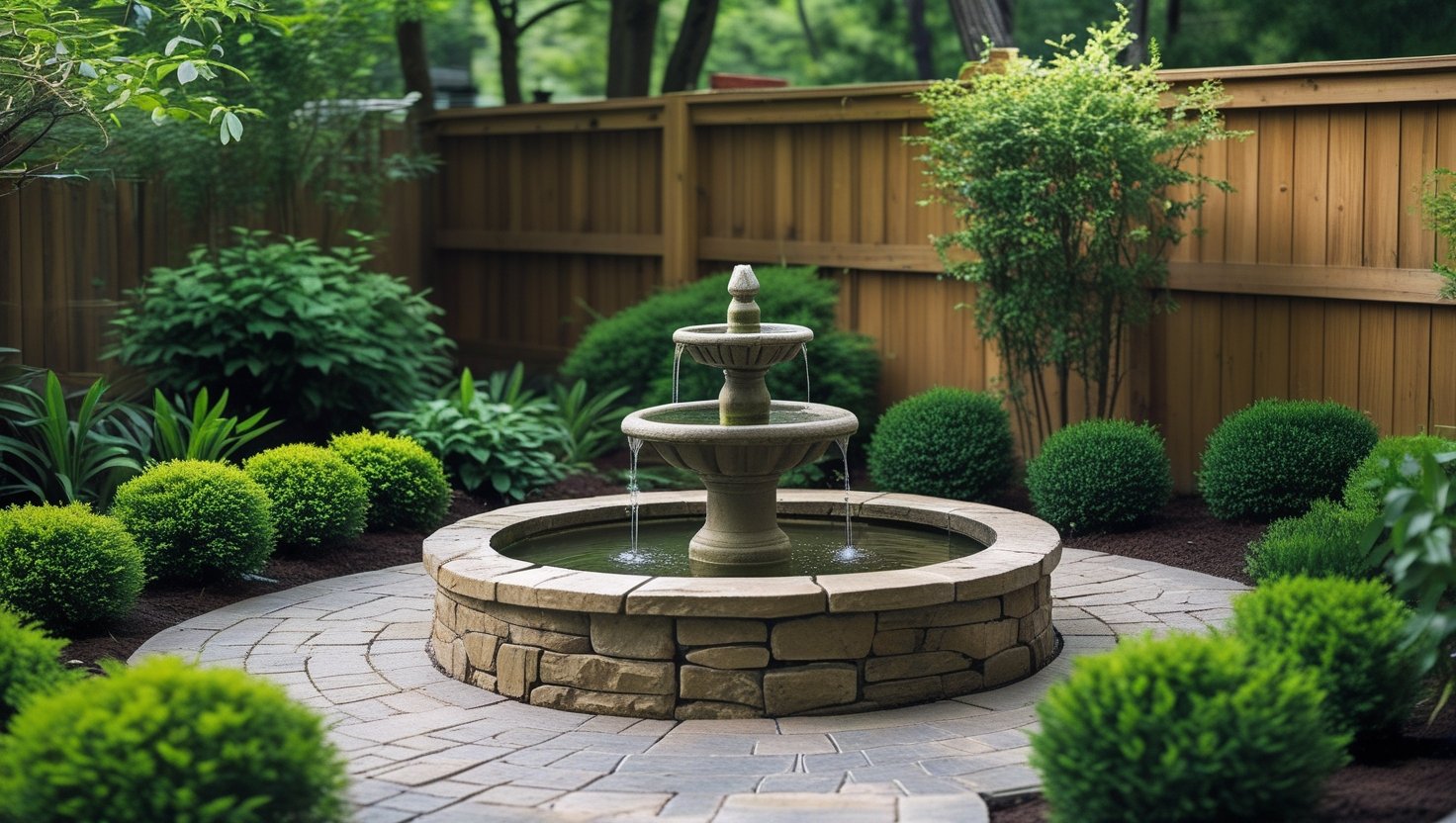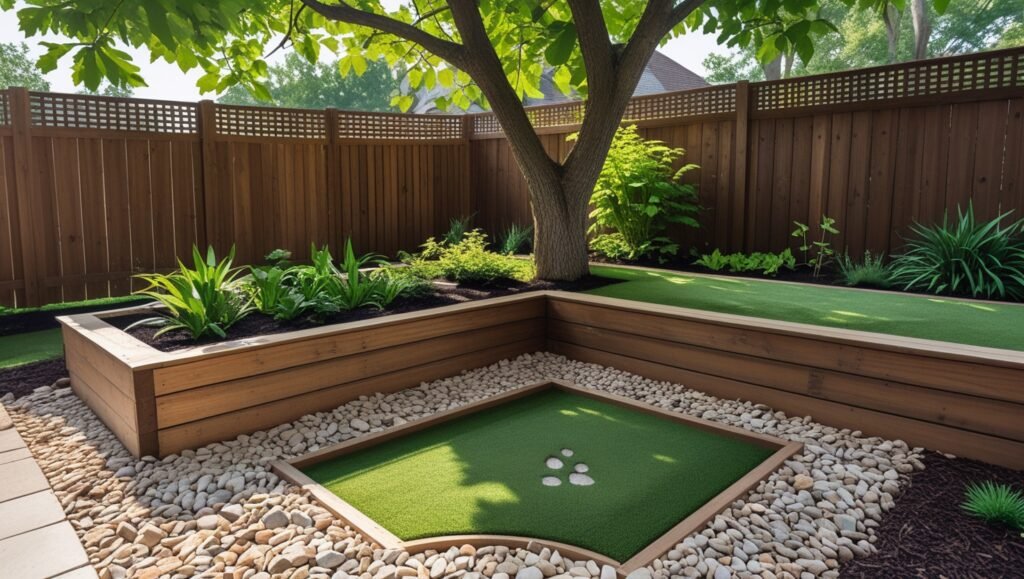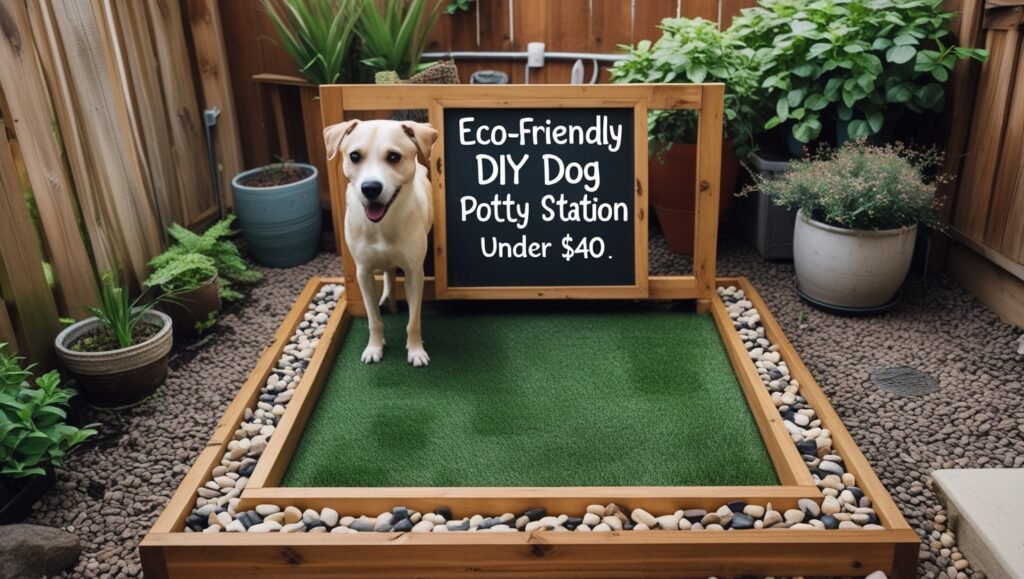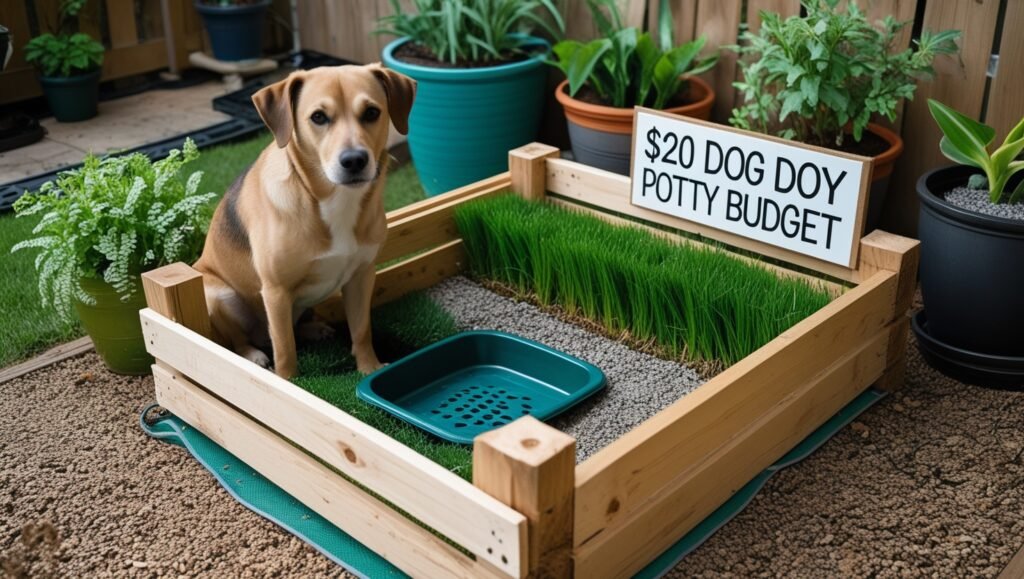It is cheap and easy to make your own dog toilet if you are looking for a sanitized and odor-free yard. This DIY project is both good for the environment and comfortable for your animals. It is easy to get rid of urine with the right drainage. This will stop bad smells, and make a nice area for both pets and humans.
A dog potty can be built on a budget. It is usually less than $20. All you need is a sturdy crate measuring around 26 by 22 inches and some tools. It is cheaper to use this method than buying new pads of grass, which can be expensive. They cost up to $200 at first and another $30 every two weeks.
By preventing ammonium-ions buildup in the soil, a good drainage system can keep bad smells at bay. Your yard will stay clean if you maintain a slope of half an inch for every four feet of pipe, and use at least 6mm thick plastic sheets. A 3-inch layer gravel will also help with drainage.
By following these steps, you can create an outdoor dog area on a budget that drains effectively. This project is beneficial to your pets and the environment. This project is easy to do and will make you and your dog happier by removing bad smells from the yard.
How to Assess Your Space
To find the best spot for your dog’s potty, you must first evaluate your yard. Consider different factors to ensure it works and fits properly. It is important to know what your dog requires, regardless of how big or small they are.
Size and type of space
Start by measuring the size of your yard. For small dogs, a 4×4 foot area may be sufficient. A medium-sized dog may need 6×6 feet. Big dogs need more space, usually starting at 10×10 foot.
Your dog should be able to move around freely. The space should be large enough for your dog to move around.
Ground Surface Considerations
Consider the type of ground in the area where you will be using the toilet. To avoid water accumulation, it’s best to have the ground slope away from your home. Crushed gravel can be used to help drain water if the depth is about 3 inches. Artificial grass can also be good for drainage if it is set up correctly.
Choose materials that are easy-to-clean and avoid places where water can collect. It will help to keep everything clean and fresh.
Avoid certain areas
Avoid placing the toilet near areas where children play or food is grown. Keep things safe and clean. To keep bad smells away, try to place the potty at least 10-20ft from where you are hanging out.
This set-up gives your dog an area that is safe and specific. It won’t interfere with yard activities.
Selecting the Right Location
Selecting the best spot for your dog to toilet in the yard requires thoughtful planning. It’s important that it is easy to access and does not smell, so everyone will be happy.
Closeness to the House
You should place your dog’s toilet near your home for convenience. It will make trips easier for you and your dog, especially in bad weather. You don’t want to keep it too close, as you will be able to smell the odors. It is best to keep it 15-20 feet away. This keeps the odors under control and makes it easier to reach.
Sunlight and Shade Balancing
The key is to choose a location with enough sunlight. The natural breakdown of waste occurs in areas that receive both sunlight and shade. It also makes the area more comfortable for your dog. Choose a place that receives sun in the morning, and shade in afternoon. It will not only keep your dog clean, but it will also keep him cool. It also prevents the soil from becoming too muddy.
If you place the dog toilet in a clean, aesthetically pleasing area, everyone will be happier. These tips will help you create a wonderful space for your pet.
DIY Dog Potty Station: Essential Supplies
Materials are important when making a dog toilet station with drainage. It is important to know what materials you will need and where they can be found. This guide will tell you what you’ll need to complete your project.
List of Materials
You’ll need the following items to build a dog toilet station:
- The potty area is housed in a large crate, tray or box.
- Waste liners to act as a base layer
- A substrate or quality soil to cover the base
- The main surface of the potty should be either artificial grass or natural grass
- Drainage materials such as gravel or drainage grid systems like AirDrain
Consider using organic soil or real grass for your project. Real grass should be changed every 2 to 3 weeks to prevent damage caused by dog urine.
Where to source materials
You can easily find the building materials for your dog’s bathroom.
- Local gardening centres for quality soils, natural grasses, and liners
- Home Depot and Bunnings are good places to buy crates, trays and artificial turf.
- Online retailers and specialty retailers who offer dog-specific toilet solutions
A DIY dog toilet station costs between $30 and $100 USD. The price depends on the materials and design complexity. Choose items that are easy to clean and durable, especially if you have a large dog.
To ensure that your dog’s potty is odor-free, you should only use high-quality materials. Shop locally or online to find the right products for your dog and your space.
The Foundation
A solid foundation is the first step in creating a dog toilet station that will last. The key to a long-lasting success is preparing the ground properly. You’ll first need to dig the ground and level it.
Excavation & Leveling
Mark the base of the dog toilet. To fit the drainage layers, remove soil up to six inches deep. Smoothen the surface to prevent water from collecting. This will ensure a flat surface for the next steps.
Proper drainage setup
Add a drainage layer after flattening the soil. Use approximately 3 inches of crushed stone. It is recommended that you use pea gravel because of its drainage properties and comfort for your dog. It’s likely that you will need about 30 bags for a standard size area. This layer should be packed down so that it is solid. If you live in an area where it rains frequently, adding a drainage system buried underground is a good idea.
Base Layer Installation
Then, place landscape fabric over the gravel. This will prevent soil from settling and weeds from growing. Add more pea gravel or potting soil to fill the remaining space.
To give the area a more natural look, finish with sod or artificial grass. Make sure your dog is comfortable with the entire setup.
You can create a safe, clean and comfortable area for your pet’s potty area by constructing the base.
Adding Your Ground Cover
The right ground cover will make the perfect dog potty area. Choose from artificial turf, pea gravel or natural grass. Choose a choice that is comfortable for your dog and also helps drainage.
Selecting the Right Ground Material
Consider more than just the appearance when choosing the material to cover your dog’s potty. Think about comfort, durability, and maintenance. Pea gravel drains well and is smooth, so it’s a good choice. Artificial turf is popular because it does not collect mud and stays clean. Natural grass is beautiful but requires more maintenance. Your pet’s bathroom will be greatly improved by a good groundcover.
Installing Ground Cover
It’s now time to install your chosen material in the dog area. After cleaning the area, lay down a base such as sand or crushed stones. It will drain more efficiently and be more stable. Spread the material evenly to cover all of the area. It will stay in place if you press it down. This gives your a firm place to walk.
Maintaining Ground Cover
Regular maintenance is required to keep the area for dog potty clean, and it will also smell good. Keep the ground cover in good condition by checking it regularly. Pea gravel should be washed periodically to remove any waste. Use safe cleaners that are not harmful to pets when cleaning artificial turf. Mow the natural grass, and reseed it if necessary. Keeping the area clean and tidy is simple if you take care of it on a regular basis.
Securing the Edging
It’s vital to pick strong materials for your dog’s potty area edges. This stops stuff from spreading out and shows where the bathroom area is. You could go for metal, plastic, or stone edges because they last outdoors and keep things tidy. Be sure these materials are well-anchored with stakes to stay in place, needing less fixing over time.
Choosing the right edging for a dog potty space means thinking about how easy it is to put in and look after. Metal and plastic are simple to install because they usually have holes for the stakes. Stone, though heavier, looks natural and lasts long, making your yard look better. Pick what looks good in your yard and works for your dog.
Putting borders around the potty area helps keep gravel or artificial turf where it should be. It also shows your pets where they can go. A space of at least 4×4 feet works for smaller dogs, but big dogs might need at least 5×5 feet. Installing it right means the area will work well and stay clean, helping keep away bad smells.
For a dog potty area that lasts, put landscape fabric under the edges to block weeds. Pin the fabric down with staples and make sure it covers the whole space. This makes a clean, smooth area for your dog, making them more comfortable.
Accessorizing the Potty Area
Making a complete dog potty area means adding the right accessories. These can improve cleanliness and make your pet more comfortable. You should think about putting in fences for the dogs, methods to get rid of pet waste, and tools for upkeep. It’s also good to add lights for nighttime and things to make the area cosy.
Fencing Options
Fences keep your dog safe in their potty space. You can choose from wooden pickets, metal, or plastic fences to match your yard. Picking the right fence stops your dog from leaving and keeps other animals out.
Waste Disposal Solutions
Getting rid of pet waste properly keeps the potty area clean and smelling fresh. Think about installing waste stations with special bags to control odor. Adding systems like PetSafe’s Pet Loo or Fresh Patch makes handling waste easier.
Cleaning and Maintenance Tools
It’s important to regularly clean the potty area to keep it in good shape. Use tools like sprays that break down waste, scoopers, and absorbent pads. Items like Hartz Home Protection Pads help control odor and make cleaning simple.
Lighting and Comfort Additions
Adding lights and things to make the area nice can make it better for your pet. Solar lights help see at night and make it safe. Shade, portable water dishes, and comfy ground covers give your pet a nice spot to go.
Conclusion
Building your own DIY Dog Potty Station can make life better for you and your pet. It costs about $40 to make, saving money compared to store-bought options. This ensures you get great value while meeting your pet’s needs.
The options we talked about show how a proper setup, choosing the right materials, and regular cleaning can keep the area clean and smell-free. From simple wood frames to stronger models with steel supports, there’s a design for every need. Whether it’s for small indoor spots or big outdoor spaces, details like drainage and pea gravel matter for cleanliness.
Cleaning every week stops urine from building up and keeps the space nice for your pet. Picking the right potty depends on your pet’s size, how well they control their bladder, and your living situation. For bigger dogs, an AstroTurf area is great. Real grass or DoggieLawn’s grass patches offer a natural feel for all pets. By following these tips, you’ll make a comfy, clean potty area and a lovely outdoor space for everyone.
